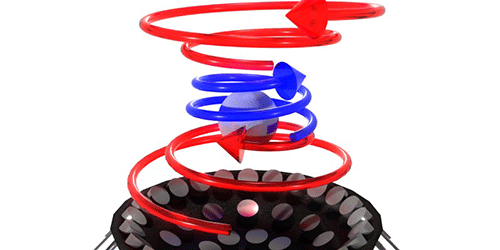Trapping Large Objects with Sound
Acoustic traps use sound waves to capture and move an object remotely. But, to date, these traps have only worked for objects smaller than half the wavelength of the trap’s sound waves—about 4 mm for the most common trapping wavelengths. Now researchers have gone beyond this size barrier with a new type of acoustic trap. Their approach could be used in applications that require the careful positioning and manipulation of both millimeter- and centimeter-sized objects, such as medical procedures like removing kidney stones.
An object in an acoustic beam experiences a “radiation force” as it scatters sound waves. If the beam is suitably shaped, this force can be used to manipulate an object. In theory, the sound wavelength can be varied to capture objects of different sizes. But the wavelength must be sufficiently short to avoid damaging the hearing of anyone nearby, which limits the sizes of objects in the trap.
In their approach, Asier Marzo and colleagues at the University of Bristol in the UK subject the object—in this case, a polystyrene sphere—to two acoustic beams that are both shaped like vortices but “wind” in opposite directions. The researchers alternately hit the bead with one beam and then the other. This process reverses the orbital motion of a particle as it spirals out of a vortex, “pushing” it back into the trap’s center and capturing particles too big to be contained by a single vortex. By tailoring the pulse frequency, the team can trap particles with diameters up to twice the sound wave’s wavelength. The same setup also allows them to controllably turn a bead in a circle with fixed rotational speeds.
This research is published in Physical Review Letters.
–Katherine Wright
Katherine Wright is a Contributing Editor for Physics.





